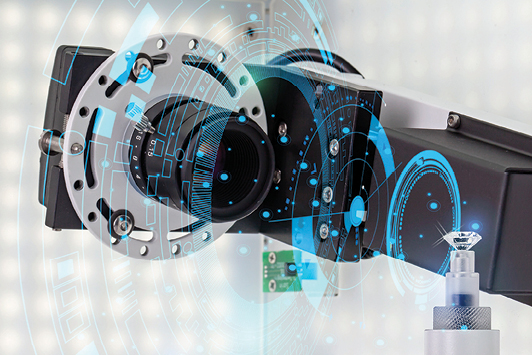 Image: Sarine Technologies
Image: Sarine Technologies
Technology has changed the way the jewelry and gem trade does business, and Covid-19 gave it a further push. Even though in-store shopping is ramping up again, jewelry lovers have discovered that they’re perfectly fine buying high-ticket luxury items online. It took the pandemic to promote the use of digital tools that enhance the virtual shopping experience.
“Technological advances are extremely beneficial for the entire industry,” says Anish Desai, president of loose-diamond importer and jewelry manufacturer Star Gems. “[Diamond] manufacturers have a better result with advanced machines and cutting techniques.”
Since consumers are immersed in technology in every aspect of their lives, it makes sense for dealers and retailers to embrace it in the diamond grading department as well.
Greater precision
Today, using artificial intelligence (AI) has become a go-to method for grading diamonds. Machines like Sarine Technologies’ automated 4Cs grading equipment or the Gemological Institute of America’s (GIA) AI clarity system make the process more objective and precise. Understanding the role AI plays in diamond assessment can assuage consumers’ concerns about a stone’s quality, even when they’re purchasing it electronically.
“Technological improvements have created a greater level of trust with clientele,” affirms Izack Yitzi Landman, director of sales at jeweler Norman Silverman Diamonds.
Desai acknowledges that “grading automation will always need human intervention to determine accuracy,” but notes that “it helps speed up the process.”
Tell the consumer
Suppliers, dealers and retailers may understand that AI-based diamond certificates from reputable labs provide a more exact picture, but does that intel trickle down to their customers?
“It’s obviously important to educate the client with regard to color and clarity data,” says Landman. Because prices depend on those factors, he’s found that customers will embrace tools that can determine them more accurately. His company specifically uses GIA certificates, he says.
Of course, the value of any laboratory’s AI grading relies on the quality of the data put into the system. At the GIA, the AI clarity system “is built on globally accepted standards — the GIA International Diamond Grading System — and [on the] GIA’s decades of research and analysis from tens of millions of diamonds,” says Tom Moses, the institute’s executive vice president and its chief laboratory and research officer.
And the assessment goes beyond the 4Cs. “Equally important is that similar technology is being applied to detect diamond treatments and laboratory-grown diamonds,” Moses reports, adding that the GIA is “incorporating these methods into our AI grading system. This can only be done with a deep understanding of both diamond treatments and how natural and laboratory-grown diamonds are formed.”
Good for trust
While Desai does not foresee the human component disappearing from the grading process, he believes technology “enables us all to do a better job at what we do,” and that “industry reports from credible labs like the GIA and [the American Gem Society (AGS)] help with consumer confidence.”
Moses agrees. “AI clarity grading is the latest step in the decades-long history of technological innovation at the GIA. Each step improves efficiency and consistency, which supports our mission to ensure the public trust in gems and jewelry.”
Article from the Rapaport Magazine - November 2021. To subscribe click here.